Abstract
A total of 343 streptococcal strains were identified to species on the basis of the progressive method of bacterial identification as advocated by Cowan & Steel's Manual for the Identification of Medical Bacteria. Comparative studies were also performed with these strains to determine the accuracy and feasibility of using various types of blood, differential media, and biochemical tests in conjunction with the progressive method of identification. The streptococcal species were then correlated with the type of specimen, sex, and age of hospitalized patients to obtain some insight into the epidemiology of hospital streptococcal isolates.
Full text
PDF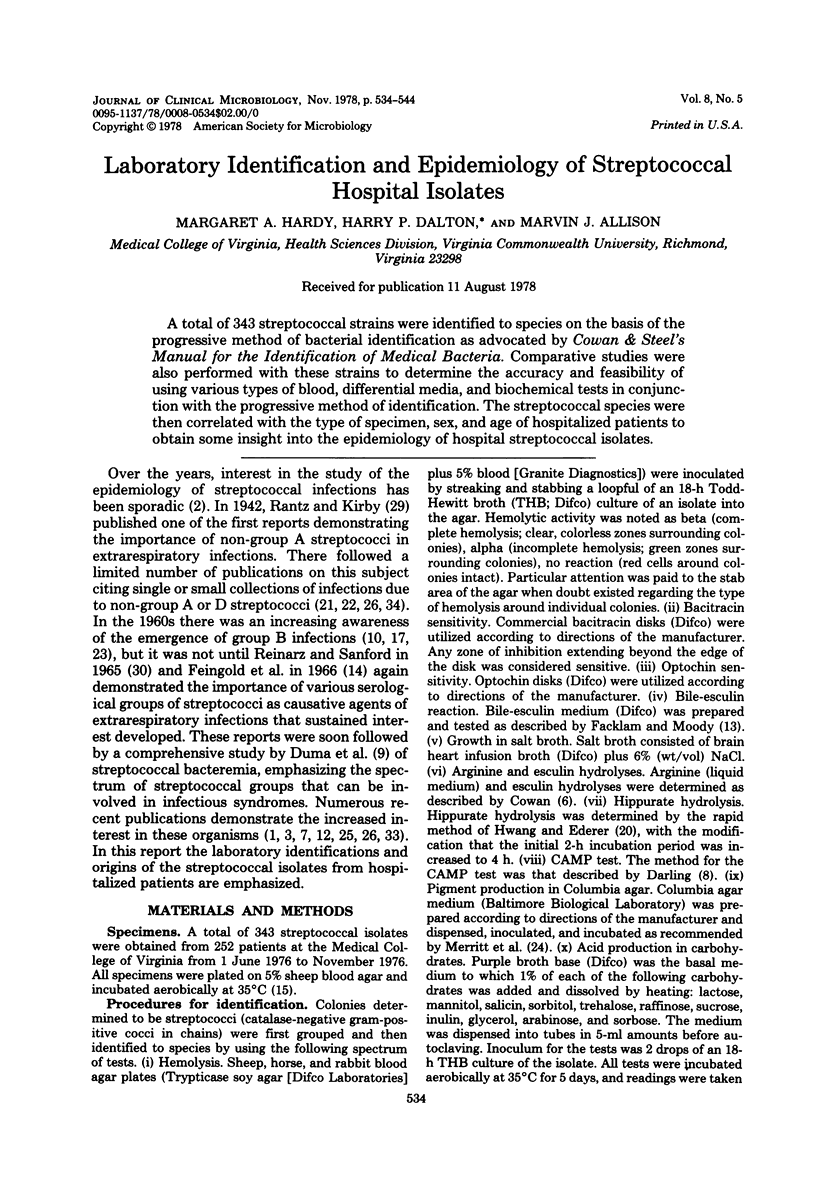


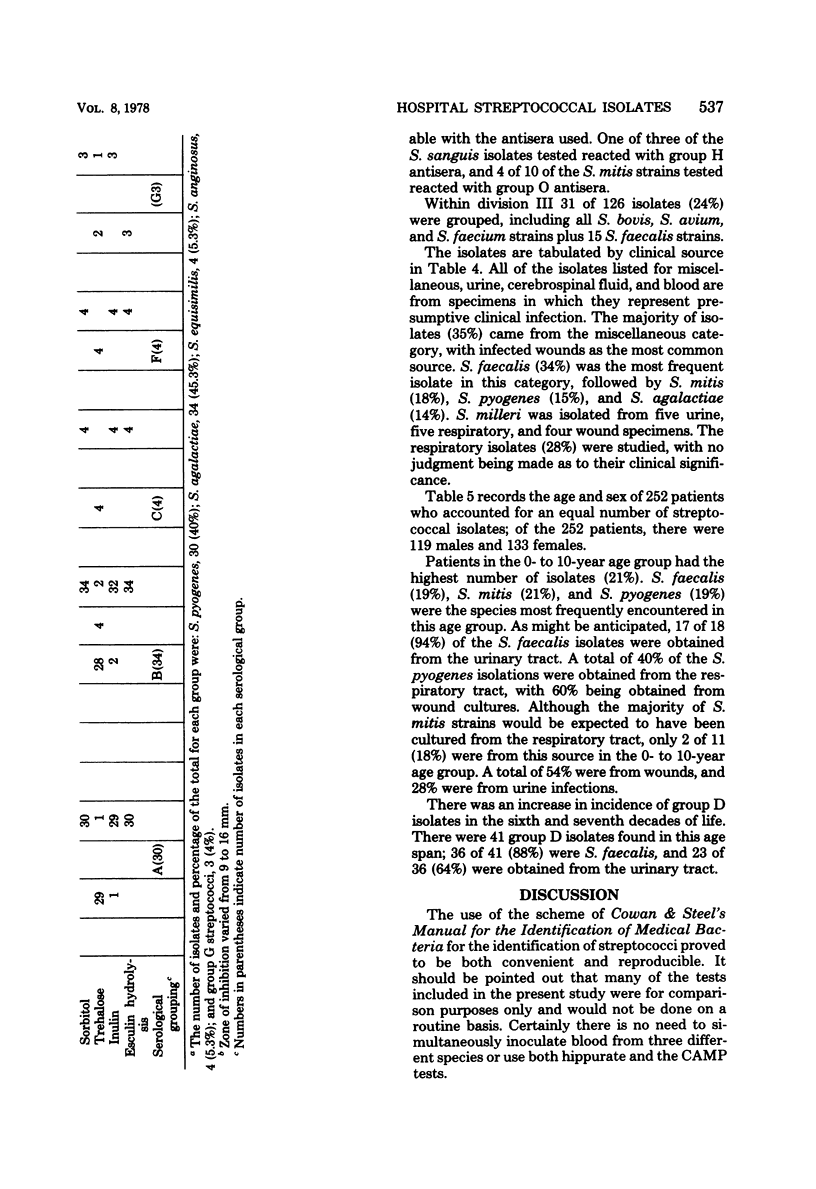
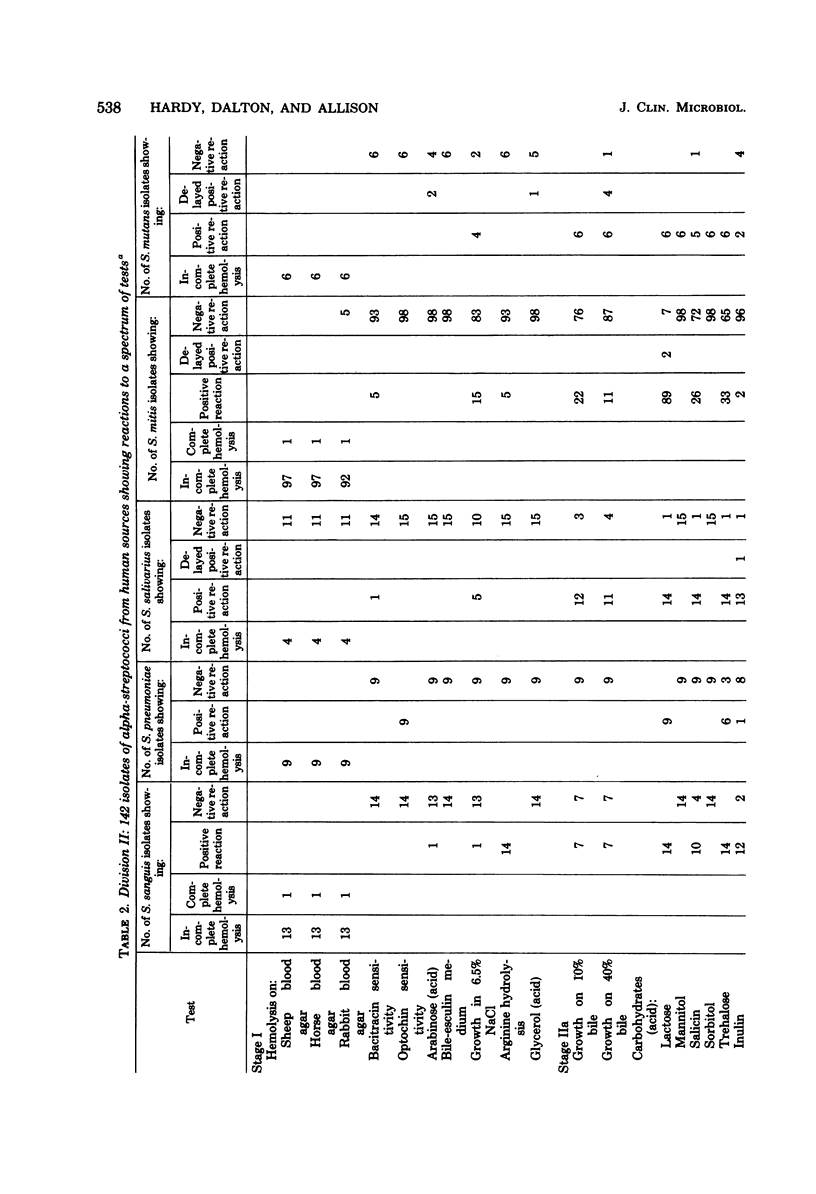
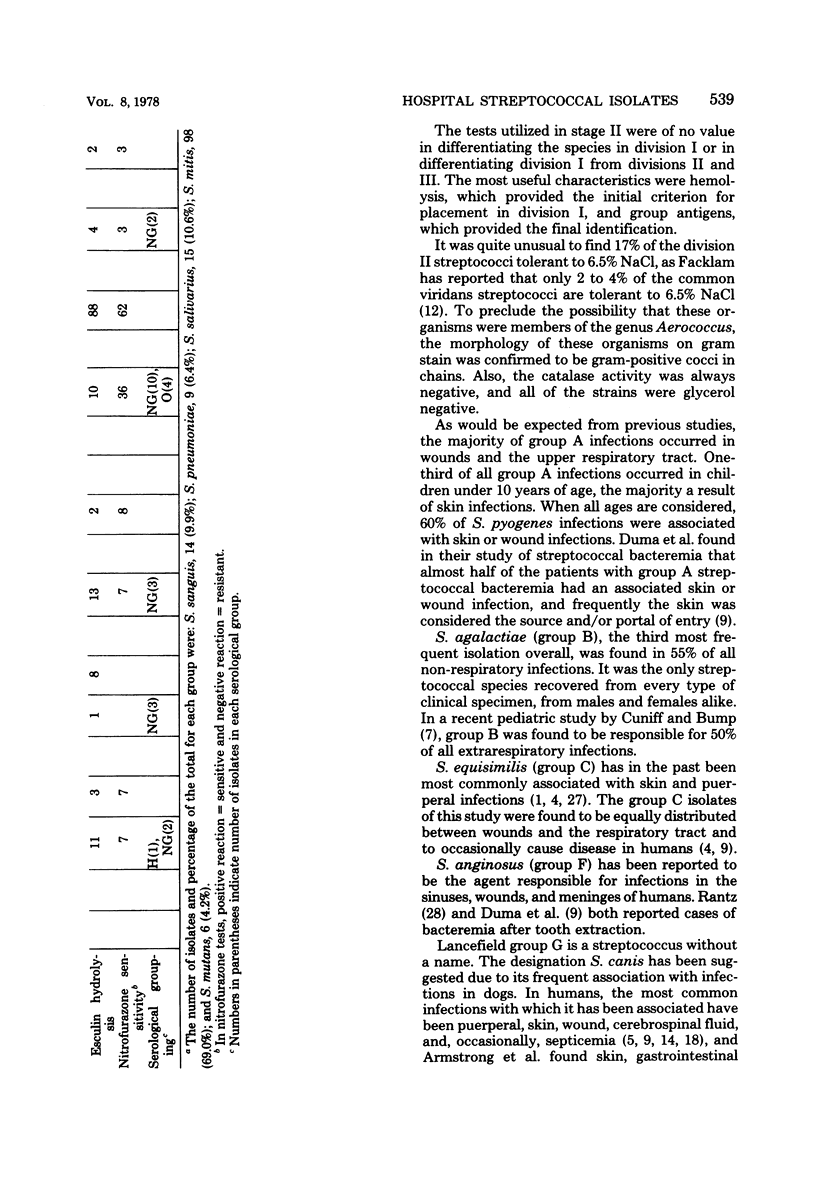
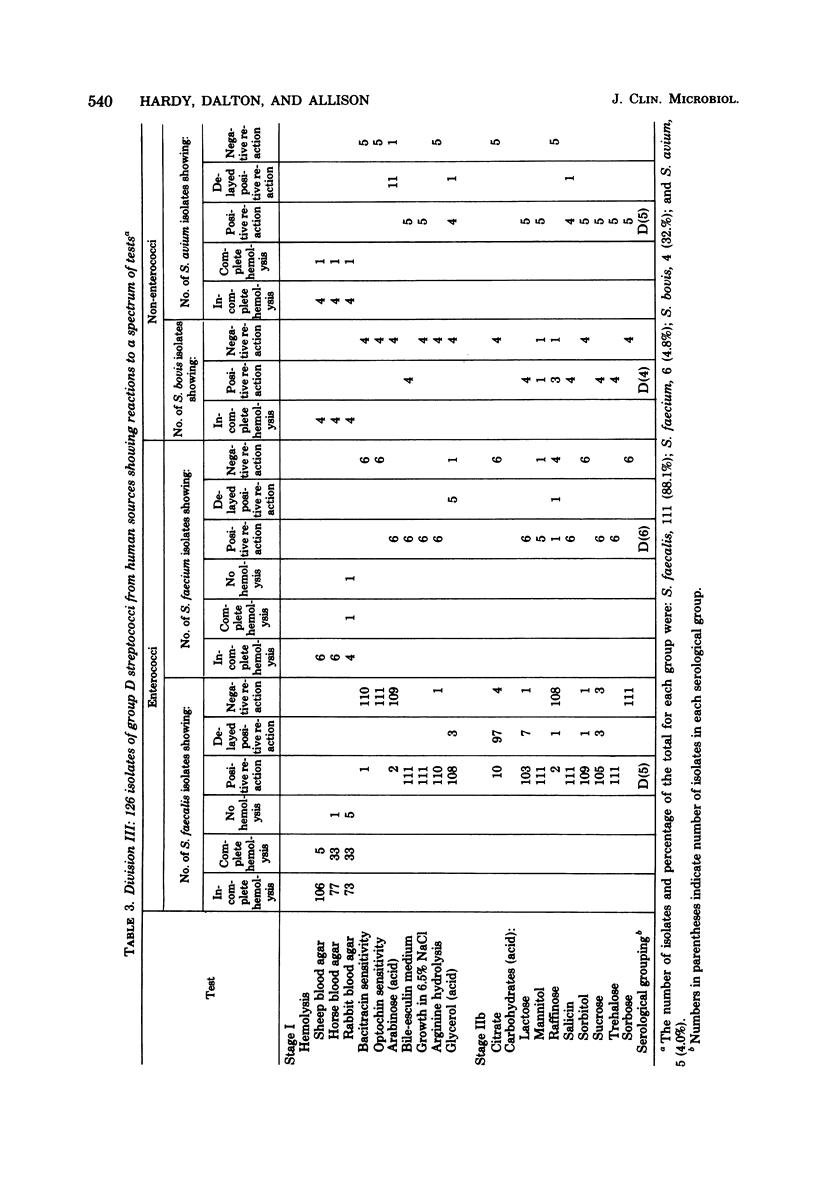
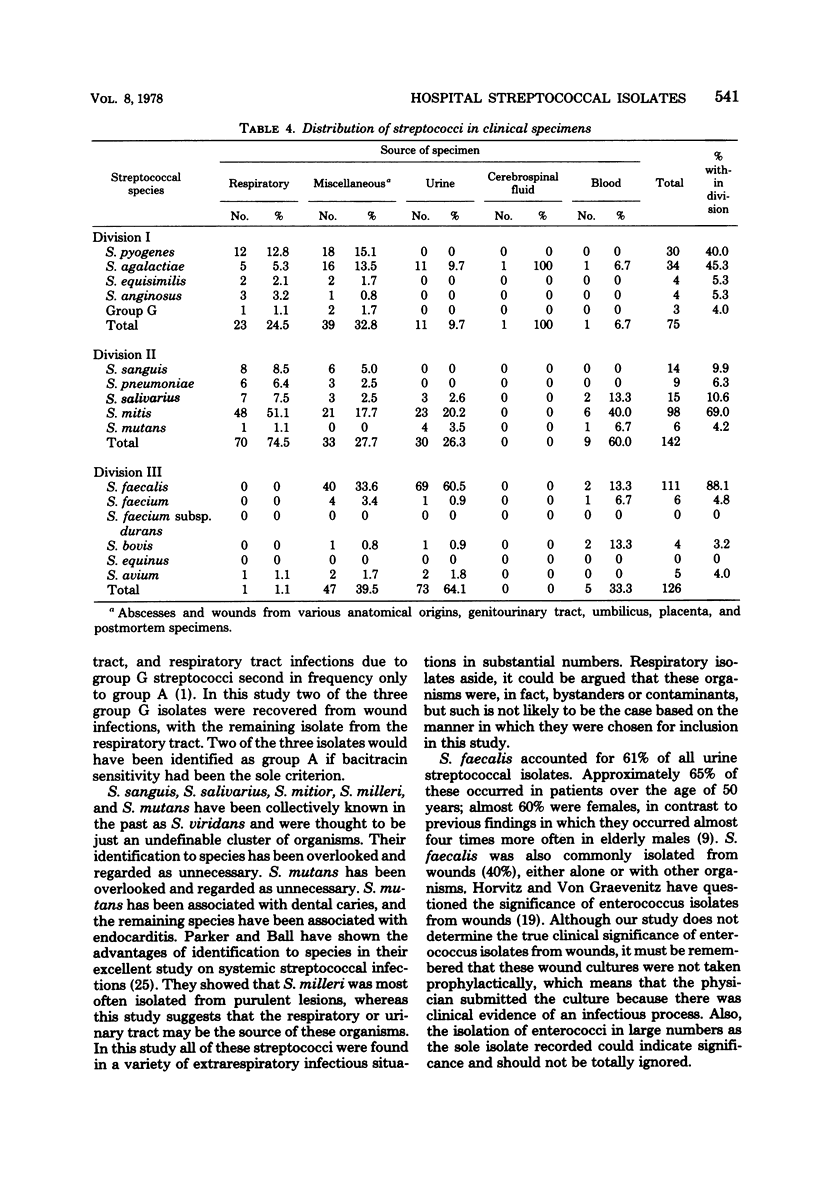

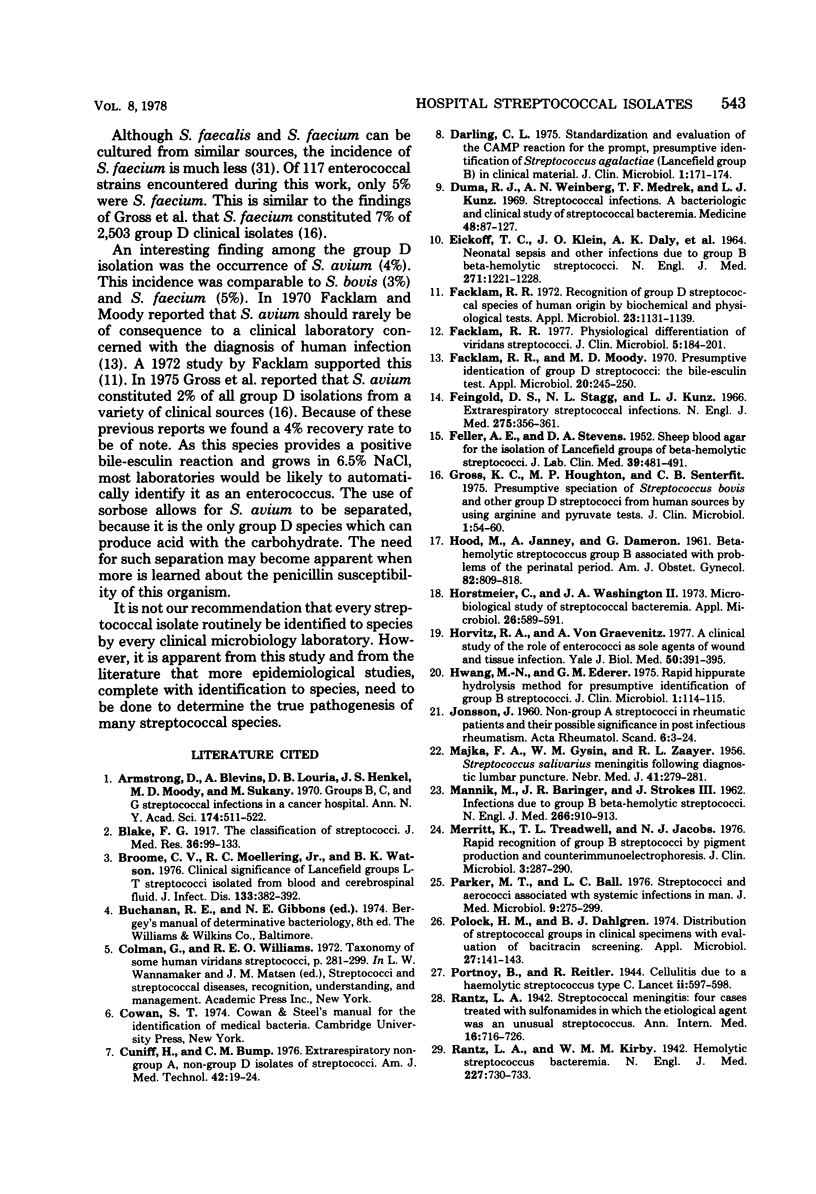
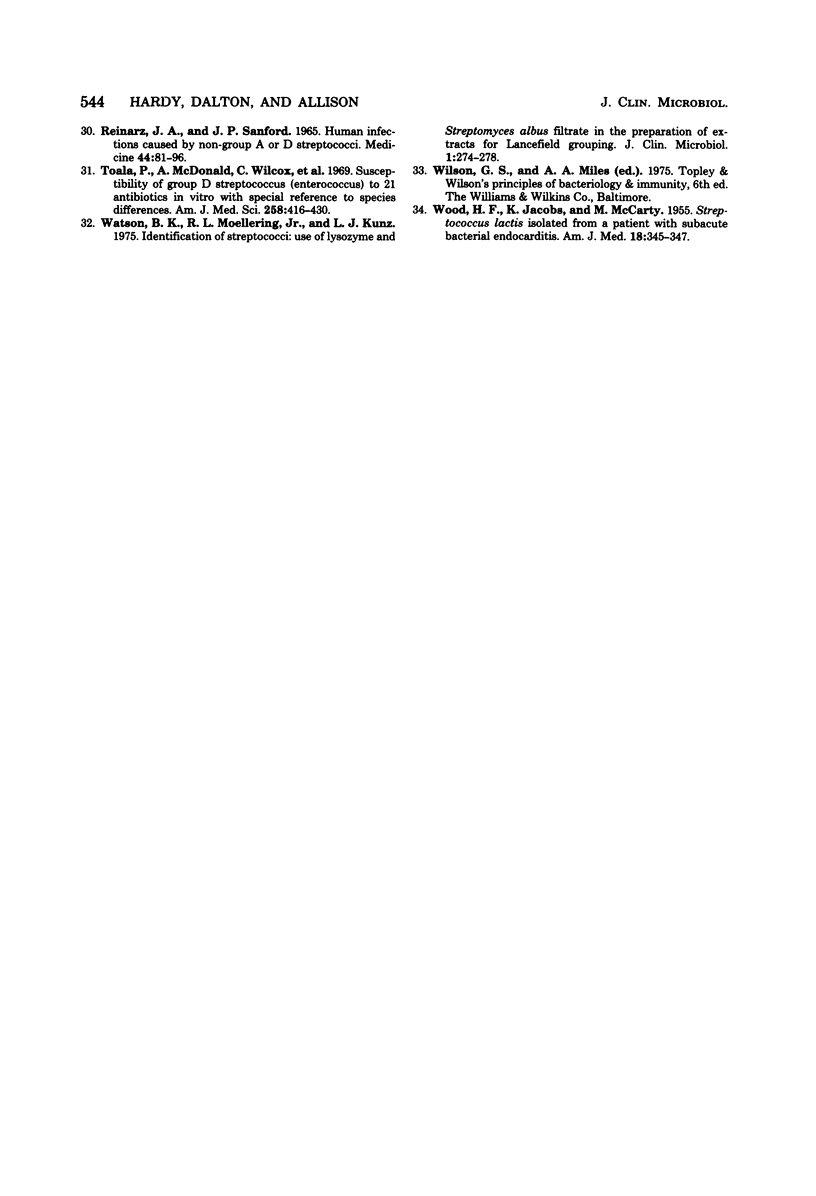
Selected References
These references are in PubMed. This may not be the complete list of references from this article.
- Armstrong D., Blevins A., Louria D. B., Henkel J. S., Moody M. D., Sukany M. Groups B, C, and G streptococcal infections in a cancer hospital. Ann N Y Acad Sci. 1970 Oct 30;174(2):511–522. doi: 10.1111/j.1749-6632.1970.tb45577.x. [DOI] [PubMed] [Google Scholar]
- Broome C. V., Moellering R. C., Jr, Watson B. K. Clinical significance of Lancefield groups L-T streptococci isolated from blood and cerebrospinal fluid. J Infect Dis. 1976 Apr;133(4):382–392. doi: 10.1093/infdis/133.4.382. [DOI] [PubMed] [Google Scholar]
- Darling C. L. Standardization and evaluation of the CAMP reaction for the prompt, presumptive identification of Streptococcus agalactiae (Lancefield group B) in clinical material. J Clin Microbiol. 1975 Feb;1(2):171–174. doi: 10.1128/jcm.1.2.171-174.1975. [DOI] [PMC free article] [PubMed] [Google Scholar]
- EICKHOFF T. C., KLEIN J. O., DALY A. K., INGALL D., FINLAND M. NEONATAL SEPSIS AND OTHER INFECTIONS DUE TO GROUP B BETA-HEMOLYTIC STREPTOCOCCI. N Engl J Med. 1964 Dec 10;271:1221–1228. doi: 10.1056/NEJM196412102712401. [DOI] [PubMed] [Google Scholar]
- FELLER A. E., STEVENS D. A. Sheep blood agar for the isolation of Lancefield groups of beta-hemolytic streptococci. J Lab Clin Med. 1952 Mar;39(3):484–491. [PubMed] [Google Scholar]
- Facklam R. R., Moody M. D. Presumptive identification of group D streptococci: the bile-esculin test. Appl Microbiol. 1970 Aug;20(2):245–250. doi: 10.1128/am.20.2.245-250.1970. [DOI] [PMC free article] [PubMed] [Google Scholar]
- Facklam R. R. Physiological differentiation of viridans streptococci. J Clin Microbiol. 1977 Feb;5(2):184–201. doi: 10.1128/jcm.5.2.184-201.1977. [DOI] [PMC free article] [PubMed] [Google Scholar]
- Facklam R. R. Recognition of group D streptococcal species of human origin by biochemical and physiological tests. Appl Microbiol. 1972 Jun;23(6):1131–1139. doi: 10.1128/am.23.6.1131-1139.1972. [DOI] [PMC free article] [PubMed] [Google Scholar]
- Feingold D. S., Stagg N. L., Kunz L. J. Extrarespiratory streptococcal infections. Importance of the various serologic groups. N Engl J Med. 1966 Aug 18;275(7):356–361. doi: 10.1056/NEJM196608182750704. [DOI] [PubMed] [Google Scholar]
- Gross K. C., Houghton M. P., Senterfit L. B. Presumptive speciation of Streptococcus bovis and other group D streptococci from human sources by using arginine and pyruvate tests. J Clin Microbiol. 1975 Jan;1(1):54–60. doi: 10.1128/jcm.1.1.54-60.1975. [DOI] [PMC free article] [PubMed] [Google Scholar]
- HOOD M., JANNEY A., DAMERON G. Beta hemolytic streptococcus group B associated with problems of the perinatal period. Am J Obstet Gynecol. 1961 Oct;82:809–818. doi: 10.1016/s0002-9378(16)36146-4. [DOI] [PubMed] [Google Scholar]
- Horstmeier C., Washington J. A., 2nd Microbiological study of streptococcal bacteremia. Appl Microbiol. 1973 Oct;26(4):589–591. doi: 10.1128/am.26.4.589-591.1973. [DOI] [PMC free article] [PubMed] [Google Scholar]
- Horvitz R. A., Von Graevenitz A. A clinical study of the role of enterococci as sole agents of wound and tissue infection. Yale J Biol Med. 1977 Jul-Aug;50(4):391–395. [PMC free article] [PubMed] [Google Scholar]
- Hwang M. N., Ederer G. M. Rapid hippurate hydrolysis method for presumptive identification of group B streptococci. J Clin Microbiol. 1975 Jan;1(1):114–115. doi: 10.1128/jcm.1.1.114-115.1975. [DOI] [PMC free article] [PubMed] [Google Scholar]
- JONSSON J. Non-group-A streptococci in rheumatic patients and their possible significance in postinfectious rheumatism. Acta Rheumatol Scand. 1960;6:3–24. doi: 10.3109/rhe1.1960.6.issue-1-4.01. [DOI] [PubMed] [Google Scholar]
- MAJKA F. A., GYSIN W. M., ZAAYER R. L. Streptococcus salivarius meningitis following diagnostic lumbar puncture. Nebr State Med J. 1956 Jul;41(7):279–281. [PubMed] [Google Scholar]
- MANNIK M., BARINGER J. R., STOKES J., 3rd Infections due to group B beta-hemolytic streptococci. Report of three cases and review of the literature. N Engl J Med. 1962 May 3;266:910–913. doi: 10.1056/NEJM196205032661803. [DOI] [PubMed] [Google Scholar]
- Merritt K., Treadwell T. L., Jacobs N. J. Rapid recognition of group B streptococci by pigment production and counterimmunoelectrophoresis. J Clin Microbiol. 1976 Mar;3(3):287–290. doi: 10.1128/jcm.3.3.287-290.1976. [DOI] [PMC free article] [PubMed] [Google Scholar]
- Parker M. T., Ball L. C. Streptococci and aerococci associated with systemic infection in man. J Med Microbiol. 1976 Aug;9(3):275–302. doi: 10.1099/00222615-9-3-275. [DOI] [PubMed] [Google Scholar]
- Pollock H. M., Dahlgren B. J. Distribution of streptococcal groups in clinical specimens with evaluation of bacitracin screening. Appl Microbiol. 1974 Jan;27(1):141–143. doi: 10.1128/am.27.1.141-143.1974. [DOI] [PMC free article] [PubMed] [Google Scholar]
- REINARZ J. A., SANFORD J. P. HUMAN INFECTIONS CAUSED BY NON-GROUP A OR D STREPTOCOCCI. Medicine (Baltimore) 1965 Jan;44:81–96. doi: 10.1097/00005792-196501000-00003. [DOI] [PubMed] [Google Scholar]
- Toala P., McDonald A., Wilcox C., Finland M. Susceptibility of group D streptococcus (enterococcus) to 21 antibiotics in vitro, with special reference to species differences. Am J Med Sci. 1969 Dec;258(6):416–430. doi: 10.1097/00000441-196912000-00006. [DOI] [PubMed] [Google Scholar]
- WOOD H. F., JACOBS K., McCARTY M. Streptococcus lactis isolated from a patient with subacute bacterial endocarditis. Am J Med. 1955 Feb;18(2):345–347. doi: 10.1016/0002-9343(55)90247-3. [DOI] [PubMed] [Google Scholar]
- Watson B. K., Moellering R. C., Jr, Kunz L. J. Identification of streptococci: use of lysozyme and Streptomyces albus filtrate in the preparation of extracts for Lancefield grouping. J Clin Microbiol. 1975 Mar;1(3):274–278. doi: 10.1128/jcm.1.3.274-278.1975. [DOI] [PMC free article] [PubMed] [Google Scholar]


